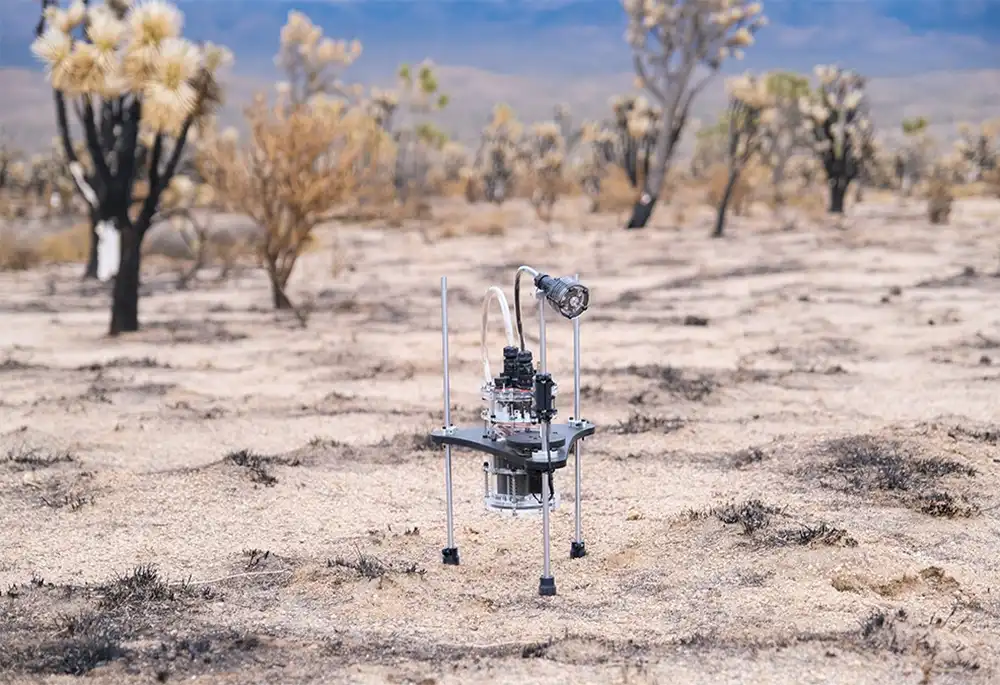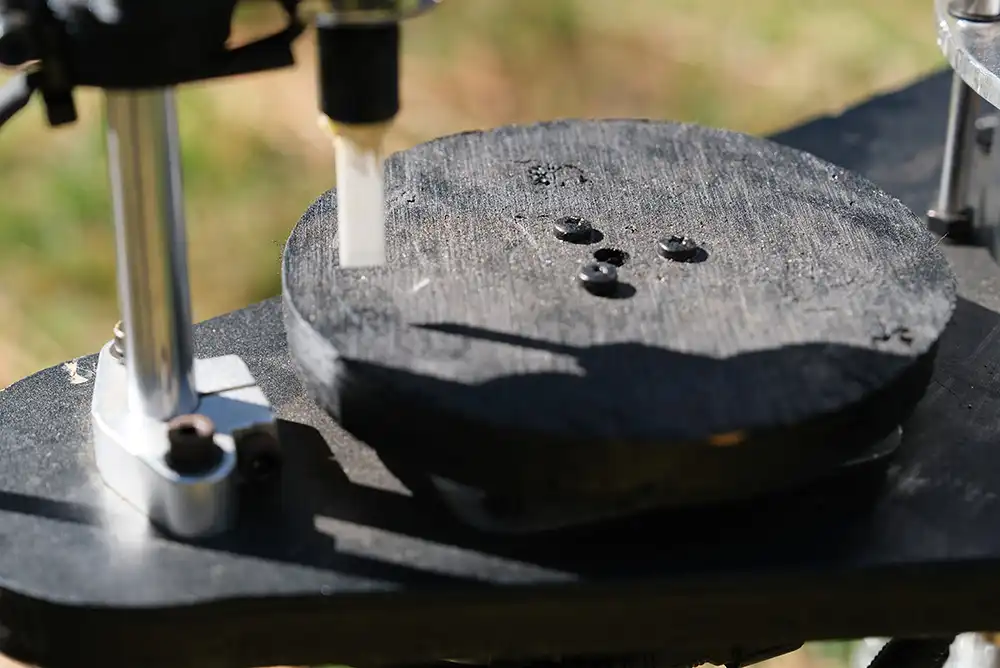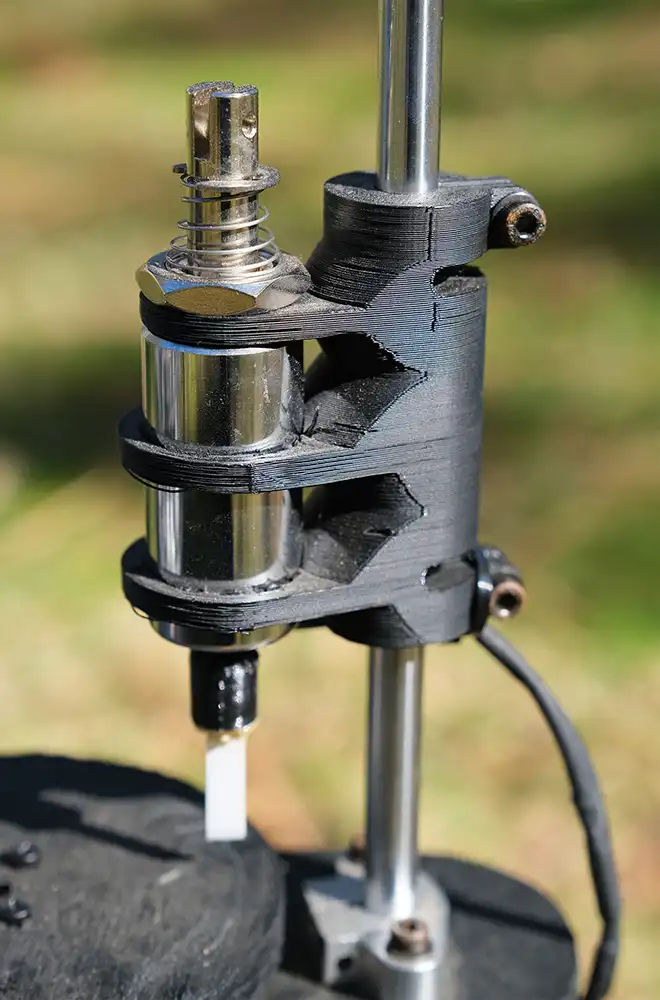Explorator chipper
The Explorator chipper species (common name Chipper) consists of a woodpecker-inspired design that mimics the sounds produced by their destructive pecking through an artificial beak that it uses to destroy a plywood disk mounted to its body. After each pecking session conducted by the solenoid-chisel striking mechanism, the wooden disk partly rotates using a DC motor to reveal a fresh section of wood.

Chipper invites us to reflect on the information about environmental activity contained within the individual sonic events that comprise the sonic environment. Motivated by the constant pecking of the omnipresent Dryocopus pileatus, commonly known as the pileated woodpecker, Chipper is specifically focused on the destruction that some sounds signify. To grant the artifact the illusion of agency within installations, Chipper triggers its pecking mechanism according to ambient lighting, humidity, and temperature. To ensure its activities are heard to best express its message of destruction, Chipper also pecks when the sonic environment is perceived to be quiet.
Woodpecking Mechanism

The woodpecker mechanism consists of two components: the solenoid pecking actuator, and the DC motor actuated
spinning wooden disk. A small ceramic cutting blade is attached to a screw using a 3D printed coupler that is then
screwed into the tubular solenoid plunger's bottom. The ceramic blade provide a more organic sound than the metal
chisels used in early prototypes. The blade is positioned above the outside parameter of a 100 mm wooden disk. The
wooden disk is attached to a turntable and spun using a DC motor. As can be seen within the test footage at , while
the pecking mechanism does damage the plywood disk the mechanisms destructive capability is not optimal. Future
iterations will address this concern by experimenting with softer woods and a more powerful, perhaps mechanically
aided, solenoid.
Body and Enclosure

While the PVC pipe enclosure utilized in chirper species (designed before the chipper) proved environmentally
resistant and robust due to discontent over the aesthetics of the Curper’s design and in an attempt to reveal the
species internal electronics as a means to exaggerate the juxtaposition between the mechatronic artifact and the
natural environment, the electronics are protected using a laser-cut stacked acrylic enclosure which "caps" a 100 mm
clear acrylic pipe. A 3D rendering showing the difference in internal arrangement between these species can be seen
above.
By reducing the body size, body thickness, and replacing the M12 bolt and t-nut leg configuration with a much
quicker to adjust and lighter 10 millimeter stainless-steel rod held in position through friction clamps attached to
the body, the Chipper served easier to install and transport. However, the stacked acrylic enclosure did experience
some leakage within the battery component on one occasion when the artifact was left installed for several days
through a rainstorm which dropped over 200 mm of rain in January, 2021. While this event produced no damage to the
electronic components, future designs will need to address this problem.